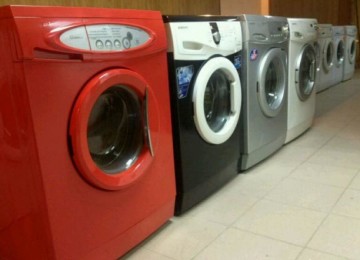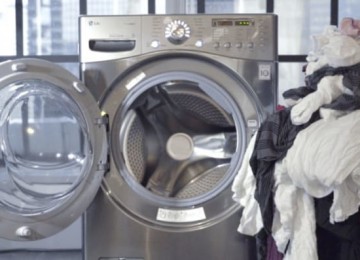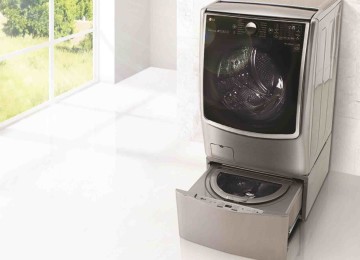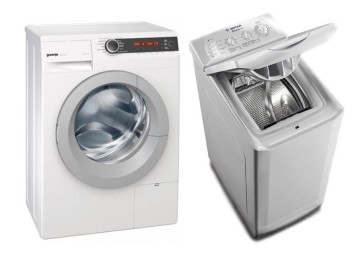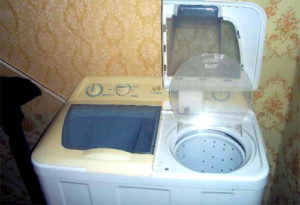 One of the options for saving water and electricity is a manual washing machine. This product is a good option for country life, because it does not need to be connected to various communications. And those who like significant savings will like it, since the cost of a manual "washing machine" is several times lower than that of the most budget version of an automatic machine.
One of the options for saving water and electricity is a manual washing machine. This product is a good option for country life, because it does not need to be connected to various communications. And those who like significant savings will like it, since the cost of a manual "washing machine" is several times lower than that of the most budget version of an automatic machine.
Description of the device
Most experts claim that a manual washing machine is a modern device that works without connection to communications, because the washing process in it is carried out mechanically.
And even if there is a power outage, the laundry will not be locked in the drum and can be easily removed from the machine.
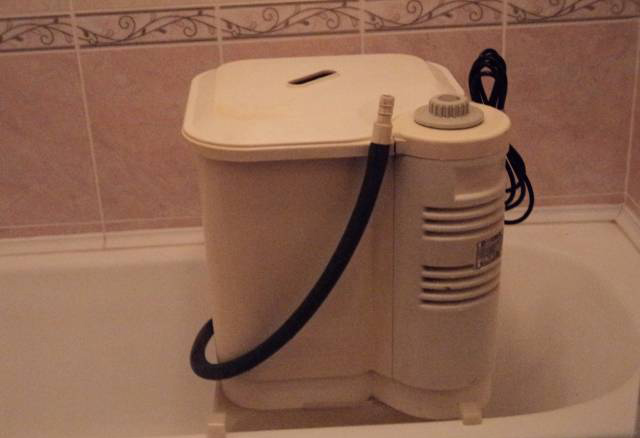
Washing in devices with manual control occurs with the help of a vortex of water, and some models have the ability to rinse and spin the laundry.
There are several varieties of this device:
- some have blades, with the help of which the process is carried out;
- others create an air-bubble effect, facilitating washing.
All models are united by vertical loading of things.
Advantages and disadvantages of manual machines
Like any other device, a manual washing machine is endowed with positive and negative qualities.
The advantages of such devices include:

- compactness – thanks to their small size, such devices are convenient to carry and even take with you on hikes;
- Autonomous operation, no need to connect the product to communications;
- significant savings in water (the process of washing clothes requires no more than 5 liters) and electricity (water is supplied hot to the machine drum);
- acceleration of the washing process - there is no need to heat the water and the washing process can be stopped at any time;
- it is possible to place things in the machine directly during the washing process;
- gentle washing - thanks to manual control, the drum does not accelerate to high speeds;
- affordable price - the cost is several times lower than that of the most budget washing machines;
- no vibration.
Flaws:
- increased noise;
- low quality of washing compared to automatic machines;
- there is no way to remove heavy stains on the fabric;
- significant expenditure of effort and time, since pouring water, rinsing and spinning require effort;
- difficulties with repairs (fortunately, they are not required often);
- small load of laundry (usually no more than 2.5 kg at a time - depending on the model);
- During the washing process, you need to be close to the machine - turn the handle or press the pedal.
What types of manual machines are there?
There are several types of machines designed for washing by hand:
- Activator. In comparison with an automatic machine, an activator-type device does not have a water connection, so warm water is supplied to them manually. However, for such a device to operate, it must be connected to an electrical outlet. Manual control allows washing to be carried out until the person himself disconnects the device from the network.

- Foot device. This is a miniature device that resembles a barrel in appearance. Such a device does not need to be connected to a water supply or other communications, and the washing process occurs when you press the pedal. To get started, you need to put things in the drum, fill it with water, and then add any powder. Some types of foot-operated machines are capable of not only washing, but also rinsing clothes and even wringing them out.

- Hand washing machine. The design and principle of operation of this device resembles a foot-operated device, only the washing process occurs by turning the handle (like on a sewing machine).

When choosing a device, you need to carefully familiarize yourself with its types and characteristics, after which you will be able to make the right choice.
Most popular models
To make it easier to decide on the choice of device, it is worth learning more about the most common models:
- Wonderwash. Despite the fact that this model does not need to be connected to communications, it can, if desired, be connected using a special hose. The device operates manually by rotating a special handle, which resembles a meat grinder.

- Drumi. This self-contained foot-type unit was manufactured in Canada. It works by pressing a large amount of foot pressure on a specially designed pedal. The washing process requires about 5 liters of water, and the amount of laundry that can be loaded into the device at a time does not exceed 2.2 kg. The positive thing is that Drumi is a manual spinning machine.

- Scrubba. This portable device bears little resemblance to a clothes washing device. However, it is an ideal option for hiking because it comes in the form of a tote bag instead of a regular drum.

Scrubba
- Shaking Washer. This portable washing machine looks like a bartender's shaker.All you need to do is load the dirty items into it, pour in water and add detergent, and then you can start the washing process. To do this, you need to shake the device vigorously, which resembles the manipulations of a bartender behind the counter who mixes alcoholic drinks.

- Laundry Pod Washing Machine. This autonomous device is equipped with a foot drive and allows you to not only wash, but also wring out the laundry without the use of electricity. The washing process requires no more than 5 liters of water, and the device works like a giant salad cutter, washing the laundry and leaving it damp. At the end of the washing process, you need to wring it out.
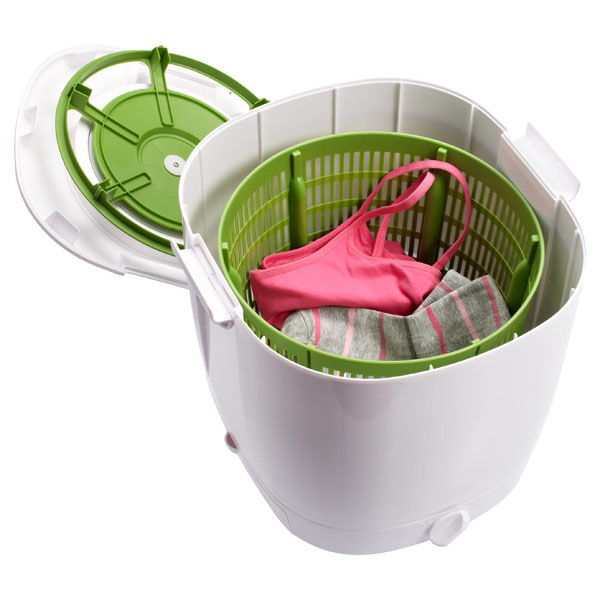
As can be seen from the description of the models, they are an ideal option for pensioners, summer residents and tourists. Due to the simplicity of the design, as well as the absence of a motor, the service life of a manual machine is much higher than that of an automatic one.






